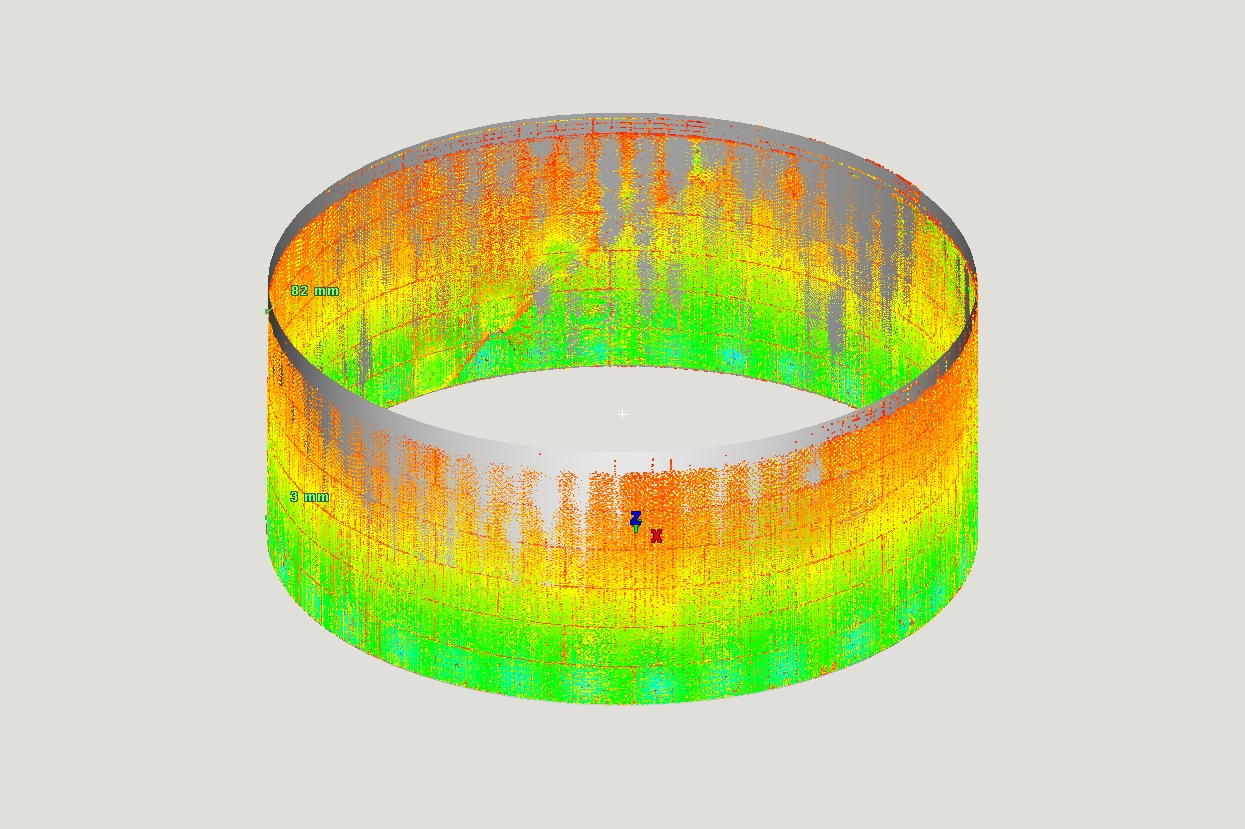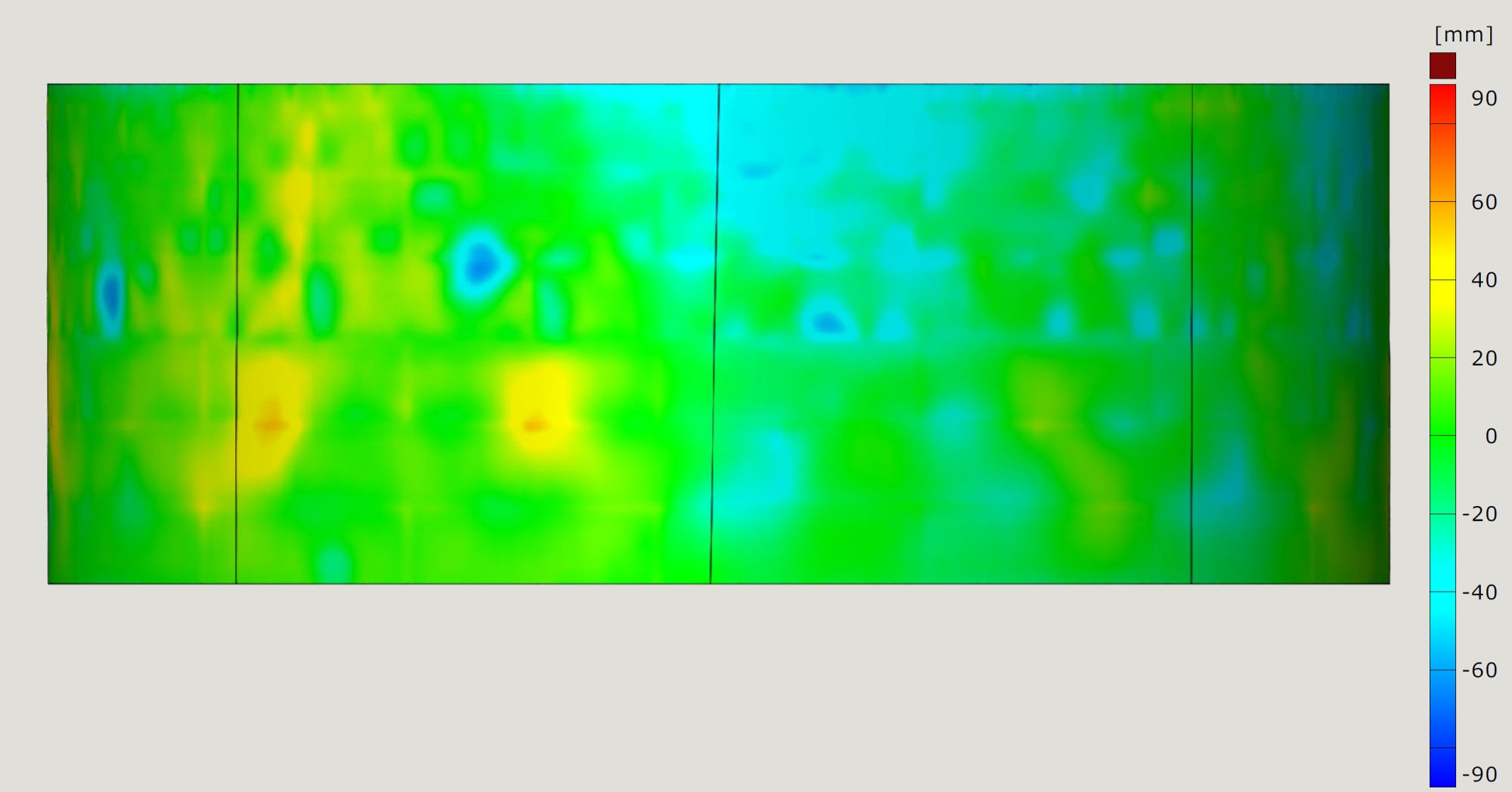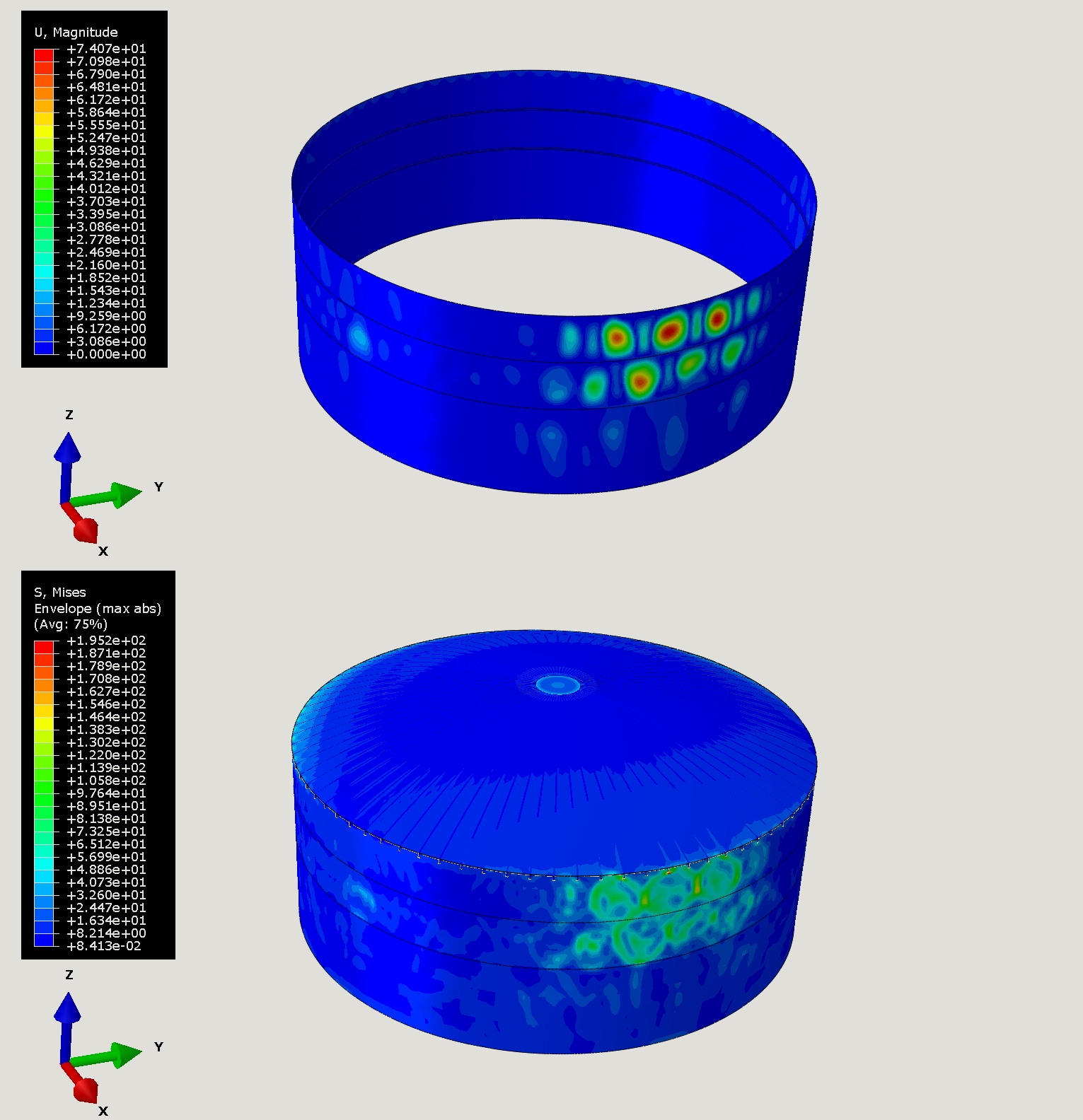post-buckling
performance
of a storage tank
SCOPE
During the construction of large petrol storage tanks, the wall structures experienced local buckling, which was initially attributed to high winds. The tanks have a diameter of 42 meters and a height of approximately 26 meters, and were designed according to the European standard EN 14015. They consist of rings of S235 plates reinforced with stiffeners. The objective of the study was twofold: first, to determine whether wind was indeed the cause of the local buckling, and second, to assess the tanks' ability to fulfill their function despite the presence of dents and bumps.
APPROACH
In the initial phase of the study, the tank design was evaluated for wind loading but also for potential differential settlements of the foundations. Unlike traditional manual calculations used for such structures that typically employ an averaged wind profile over the tank wall, a detailed finite element model was created, incorporating a more realistic wind profile. This approach revealed that the formation of local dents on the tank wall during erection was indeed possible. However, the calculations also confirmed that the tanks were still capable of fulfilling their function without compromising their performance.
To accurately evaluate the performance of the tanks in their as-built state, a 3D scan of their surfaces was conducted. The raw scan data was processed using a technique called surface wrapping, which enabled the creation of a geometry suitable for simulations. To ensure the safety and reliability of the calculations, the measured dents and bumps were artificially increased by a factor of 1.6, following a complex procedure outlined in EN 1993-1-6. This procedure takes into account the profile and immediate vicinity of each dent, and required the development of a custom software tool to manipulate the finite element geometry.
The artificially amplified geometry was then subjected to a broad range of load configurations using both non-linear collapse analysis and dynamic analysis.
RESULTS
Although it was not possible to conclusively determine the precise external factors that caused the initial buckling of the tank walls, it was demonstrated that the tanks, in their as-built state with all the introduced imperfections during erection, were still capable of fulfilling their function. An interesting side finding of the study was that even minor differential settlements, on the order of the wall thickness, could result in local buckling effects in these structures, far more significant than those caused by high winds during storms.


Raw data as obtained from a 3D scan

Post-processed 3D scan data as implemented in the FE geometry

A typical outcome of a post-buckling analysis is the calculation of the deformations and residual von Mises stresses in the structure. These results provide important information on the extent and distribution of the structural damage caused by the buckling, and can be used to assess the structural integrity and safety of the system.